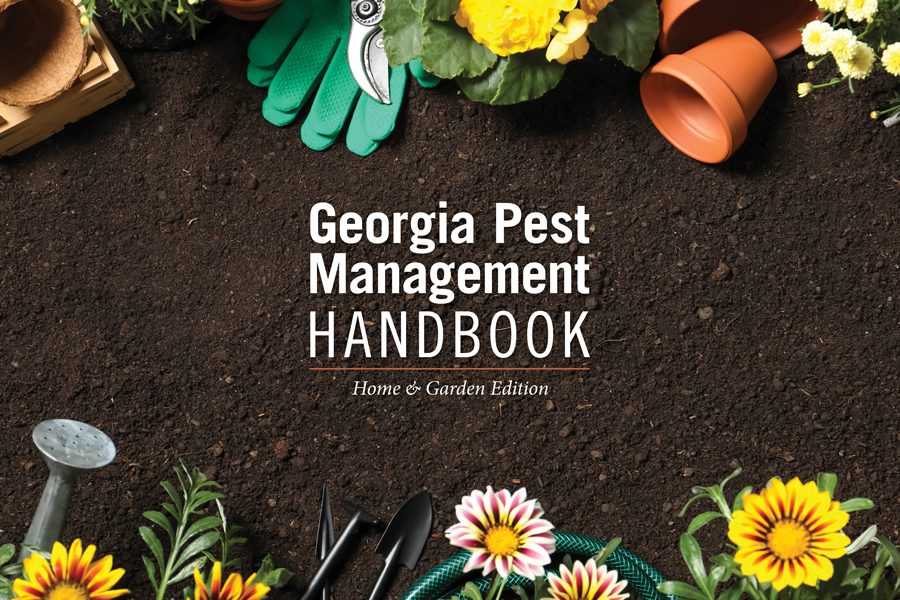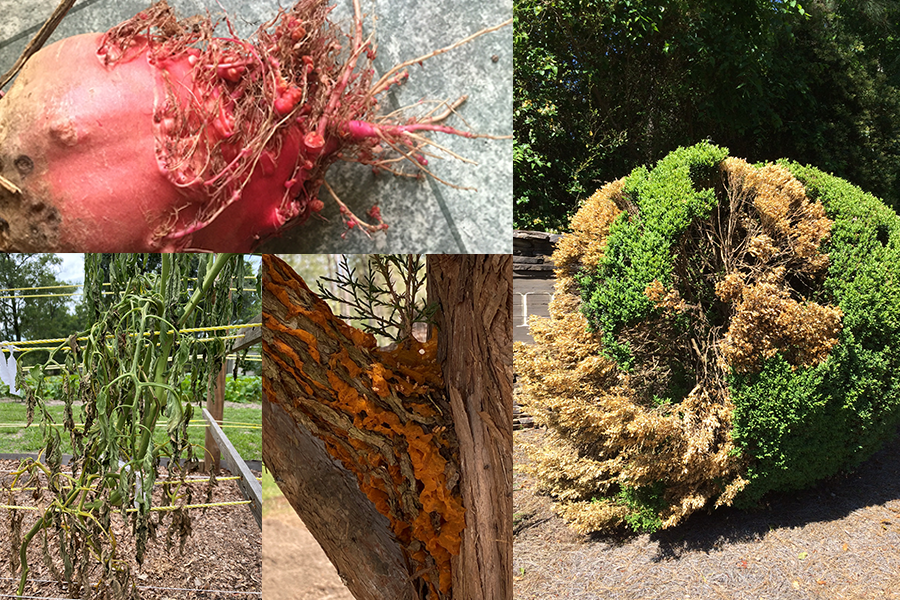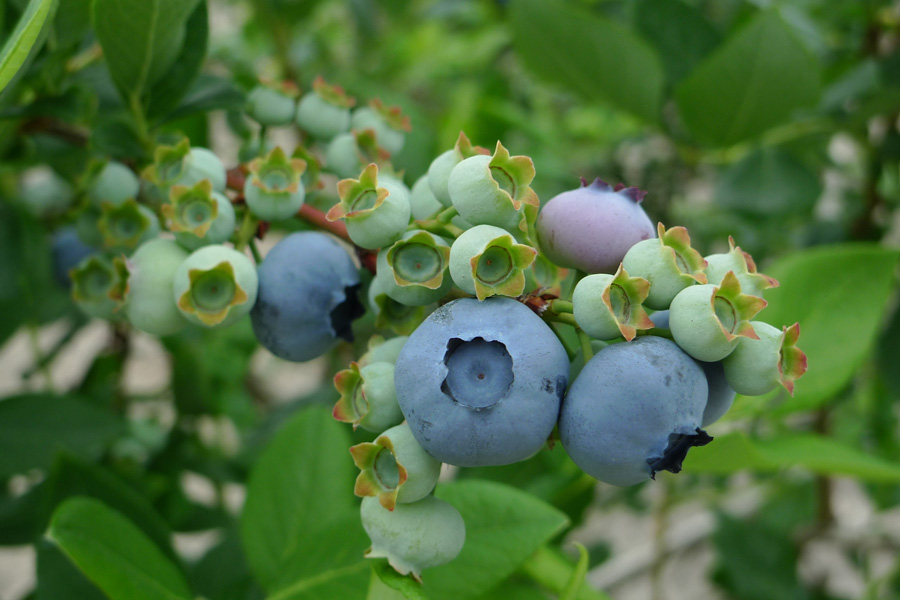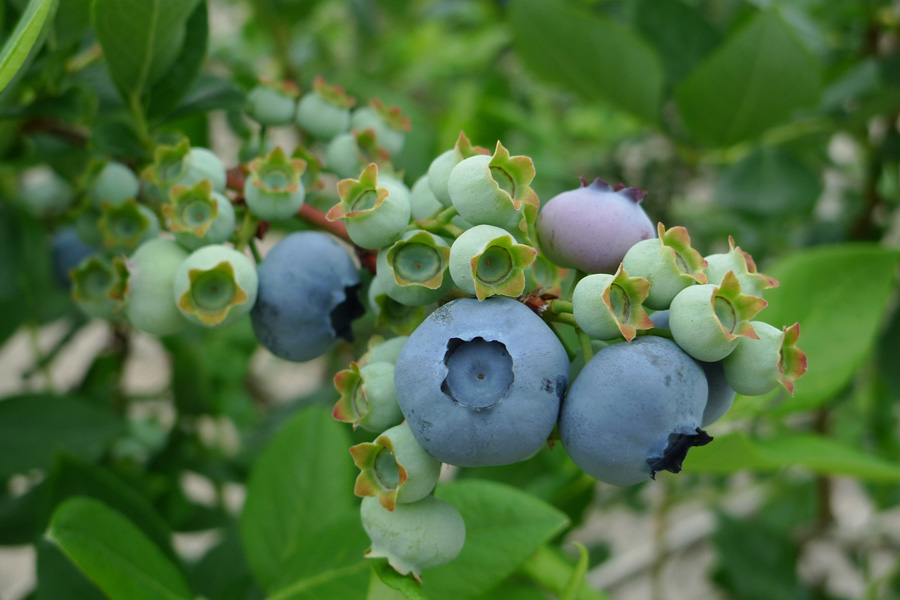Plant Pests and Diseases
-

SB 48-04
Aquatic Environments
This section of the Home & Garden Edition covers external parasite control in aquatic environments, including fishery chemicals, aquatic weed control, response to herbicides, restrictions, and calculating concentrations in aquatic environments. Beginning in 2022, the Home & Garden Edition has been updated biennially. When purchasing a product based on a first-year recommendation of the Handbook, check the current product label before purchase to be sure it is still labeled for the use for which you are buying it. For pesticide products you have on hand from earlier purchases, you are allowed to use them until they are depleted without penalty under the law. Always follow label instructions before use. Contact the product’s manufacturer for the most up-to-date label.
Gary Burtle, James Shelton, Allison Johnson, and Braxton Crews
|
-

SB 48-05
Home Orchard
This section of the Home & Garden Edition covers pest control in home orchards, including apples, peaches, bunch grapes, muscadines, strawberries, blueberries, and other fruits. Beginning in 2022, the Home & Garden Edition has been updated biennially. When purchasing a product based on a first-year recommendation of the Handbook, check the current product label before purchase to be sure it is still labeled for the use for which you are buying it. For pesticide products you have on hand from earlier purchases, you are allowed to use them until they are depleted without penalty under the law. Always follow label instructions before use. Contact the product’s manufacturer for the most up-to-date label.
Harald Scherm, John All, Brett Blaauw, and Allison Johnson
|
-

Whiteflies are common and recurrent insect pests of cotton in Georgia. The severity of whitefly damage varies from year to year based on the size of the pest population. The most abundant species of whitefly found infesting cotton in Georgia is Bemisia tabaci, commonly known as the silverleaf whitefly (SLWF) or sweet potato whitefly. Another species, bandedwinged whitefly (Trialeurodes abutiloneus), may also be present in Georgia cotton. This publication highlights whitefly biology, damage, sampling procedures, control methods, and tips for managing risk in cotton.
Phillip Roberts, Apurba Barman, and Michael Toews
|
-

The success of the Southeast Boll Weevil Eradication Program has played a major role in the recent revival of Georgia’s cotton industry. Along with these economic benefits, the remarkable success of the eradication program
has led to a significant decrease in insecticide use in Georgia cotton, and to substantial environmental benefits to growers and residents of the state.Phillip Roberts
|
-

Detection of damaging nematode infestations may allow growers to significantly increase crop productivity and profitability. It is imperative that growers test their soil to determine which nematode species are present in their fields as well as their population densities. The best way to detect and identify nematode problems is through collecting soil and/or plant samples and having those samples analyzed in a reliable nematode diagnostic lab. It is highly recommended that, if you suspect a field has a nematode problem, test the soil and then consult with your local Extension agent or nematologist for advice on how to manage the nematode infection.
Intiaz Chowdhury
|
-

2021 plant disease losses, including control costs, amounted to an estimated $889 million. The value of the crops used in this estimate was approximately $7690 million, resulting in a 11.6% relative disease loss across all crops included in this summary. For most crops, the estimated values used to compute these disease losses are summarized in the UGA Center for Agribusiness & Economic Development’s “2021 Georgia Farm Gate Value Report” (AR-22-01). Some estimates for fruits, ornamentals, and turf rely on specialists’ knowledge of the industry and industry sources for information.
Harald Scherm and Elizabeth Little
|
-

C 1278
Blueberry Production
This publication covers a brief history of the development of blueberries, plus general production requirements such as varieties, chill hours, soil considerations, etc. The southern highbush blueberry is a hybrid that requires fewer chill units compared to northern highbush types, allowing the state of Florida, southern areas, and Georgia to produce fruits in the U.S. market during March, April, and May. The development of southern highbush also has allowed the production of blueberries in countries such as Mexico and Peru.
Zilfina Rubio Ames
|
-

C 1278-SP
Los Arándanos y Su Producción
El arándano alto del sur, es un híbrido que requiere pocas horas de frio—una aproximación de cuantas horas la planta requiere estar expuesta a temperaturas de entre 32 a 45 °F para romper la dormancia y empezar iniciación floral—comparado con el arándano alto del norte. Por lo que permite al estado de Florida y áreas del Sur de Georgia posicionarse en el mercado estadounidense en los meses de Marzo, Abril y Mayo, y es el que ha permitido la producción de arándanos para exportación en países como México y Perú.
Zilfina Rubio Ames
|
-

This is an annual report highlighting research conducted during 2021 and 2022 for Vidalia onions. Research topics include: variety trials, irrigation and fertilizer strategies, sulfur content in soils, effect of fertilizers on yield, thrips, factors affecting postharvest incidence of bacterial bulb rot, and Botrytis leaf blight.
Tim Coolong, Christopher Tyson, Aubrey Shirley, and Theodore Mcavoy
|